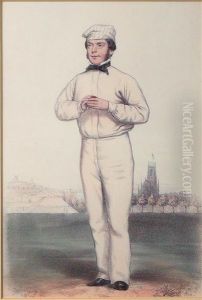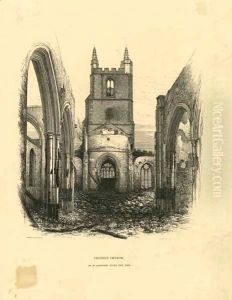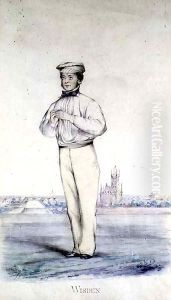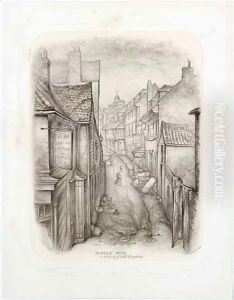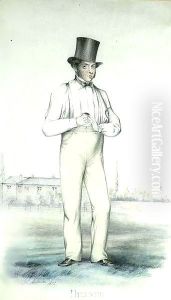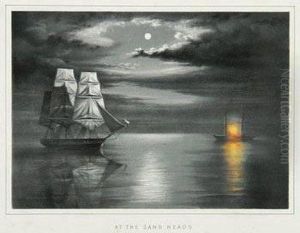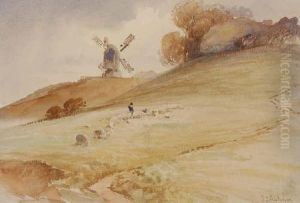John Corbet Anderson Paintings
John Corbet Anderson was a British artist, antiquary, and author born in 1827. His contributions to the world of art and history are notable for their depth and diversity, marking him as a multifaceted figure of the Victorian era. Anderson's interests spanned a broad spectrum, including archaeology, history, and the visual arts, which he adeptly combined in his extensive body of work.
Anderson's artistic journey was deeply intertwined with his passion for history and antiquity. Unlike artists who dedicated themselves solely to the pursuit of painting or sculpture, Anderson found his muse in the ancient and historical landscapes of Britain. He was particularly drawn to the study of ancient British and medieval antiquities, which not only fueled his artistic endeavors but also established him as a respected antiquary. His works often depicted historical scenes and landscapes, imbued with a sense of accuracy and detail that reflected his scholarly interests.
Throughout his lifetime, Anderson produced a significant number of etchings, drawings, and writings that contributed to the Victorian fascination with history and the past. His etchings, characterized by their precision and attention to historical detail, were highly regarded by his contemporaries. Anderson's commitment to historical accuracy in his artworks was paralleled by his scholarly contributions to the field of antiquarian studies. He authored and illustrated several books and articles on British antiquities, further solidifying his reputation as an expert in the field.
John Corbet Anderson's legacy is not only preserved in his artworks but also in his contributions to the understanding of British history and antiquities. His works continue to be of interest to historians, art historians, and collectors alike, offering insights into the Victorian era's perspectives on history and the past. Anderson passed away in 1907, leaving behind a rich legacy that bridges the worlds of art and history, reflecting the profound connection he saw between the two disciplines.
